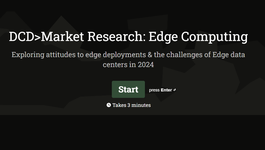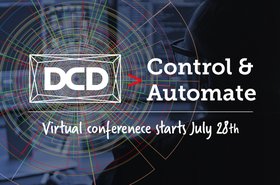These days, digitization-driven value creation is cropping up in all kinds of different ways. It influences everything from the way we more efficiently conduct our business to benefits we accrue in our daily personal lives. In order to experience the benefits of this value creation, technologies that assure Certainty in a Connected World play an almost invisible, but critically important, support role behind the scenes.
Let me provide a personal example. My wife and I recently moved into a new house. Not long after we settled in, we noticed that our lights would start flickering from time to time. We found out we were experiencing an intermittent short in our electrical box that kept creating brown outs. During this time, my two small children were complaining because they thought the TV was beeping at them while they watched their favorite show on Netflix (which happens to be Llama Llama). It was really our uninterruptible power supply (UPS) behind the TV that was beeping while it kept our router and TV up and running despite the power glitches we were experiencing. If we had no UPS in place, the kids would have had no TV show to watch at all, so, without realizing it, the kids were actually benefitting from the value that the beeping UPS was creating. When I decided to originally purchase the UPS, part of my expected value in return was to be able to ride out minor power anomalies without experiencing downtime in my home networking and entertainment systems.
Certainty in a connected world
This concept of value can be applied in business especially for companies that use digital experiences and processes as part of their value creation process. In my role, I regularly talk to customers who share their business challenges, and we discuss how technology can be applied to those challenges. In a recent engagement with an Italian glass maker, we learned how they were able to leverage the Internet of Things (IoT) and edge computing to better control the precision of their glass manufacturing process. IoT sensors gather critical temperature and viscosity data that is quickly processed to drive up the quality of the glass under production. These process improvements have led to increased profits and a growing business.
All of the edge use cases we encounter, such as this glassmaker, exist for different reasons. Across the retail, healthcare and banking industries alone, for example, hundreds of new use cases are emerging every year. The common element among them is an explosion of business value created due to innovation, whether it involves AI or IoT or sensors or some other new technology. When those systems are not up and running, that value is not created; the promise to the customer is not delivered.
Where does that leave organizations that fail to move forward with such value creation-imbedded technology initiatives? What process do they go through when assessing their ability to create client business value? What is the domino effect on the value chain without digital solutions to ensure certainty, connectivity, reliability and confidence?
Digitization shifts the value creation proposition
The value creation process is directly intertwined with product development. When a company sets out to build a product or service, they face a fundamental challenge. They have to come up with a way to create enough value in the minds of prospective purchasers to assure that the client is willing to pay enough to at least offset the product marketing, production and delivery costs.
Over time, technology has become essential to this value creation proposition. Consider the example of the entertainment content delivery industry, and, more specifically, the evolution of the aforementioned Netflix. Compared to Blockbuster, the major competitor they faced when first bursting onto the scene, Netflix provided business value in two ways: they offered customers near unlimited and instant access to content when and where they wanted it, and at the same time, dramatically decreased the cost of serving up that content.
The Netflix offering itself is a digital service, yet even companies that are perceived as non-digital are quickly using the value creation process to augment the business value of their products. Consider the large doughnut and coffee shop chain, Dunkin Donuts (who recently shortened their corporate name to Dunkin’). They strive to make it fast and easy for their customers to buy coffee in the morning. Their business value is specifically designed around people who are in a rush, with little free time. They call this concept “Dunkin on the go”. They have since enhanced this business value to great effect by creating a mobile app that allows customers to order and pre-pay. Now, their morning customers stop by for only one reason: to pick up their coffee on the way to work without waiting in line or having to reach in their pocket for a wallet. Digital technology has been used to extend their value creation process.
Value creation systems rely on Edge, and need physical security and power protection
The business value that organizations experience when they deploy new technologies at the edge never comes to fruition if the systems that support the process behind-the-scenes aren’t reliable and connected. APC by Schneider Electric’s promise of Certainty in a Connected World is the very business value creation proposition that we offer to our partners and customers.
Downtime threats and system security vulnerabilities are very real and continue to be an issue for organizations that digitize their operations. A recent Uptime Institute survey (the Global Survey of IT and Data Center Managers 2019) showed that power failure leads to 33 percent of corporate outage/downtime incidents. IDC survey data (from the 2019 Datacenter Operational Survey) also indicates that 17 percent of data center owners surveyed over the last 12 months experienced a physical security breach that threatened the protection of their data. These two statistics combined are the reason why our clients turn to us to protect their edge computing infrastructures through simple solutions such as micro data centers and remote monitoring of their edge assets.
To learn more about how Certainty in a Connected World relates to edge computing environments and associated business value, check out our brief video.





